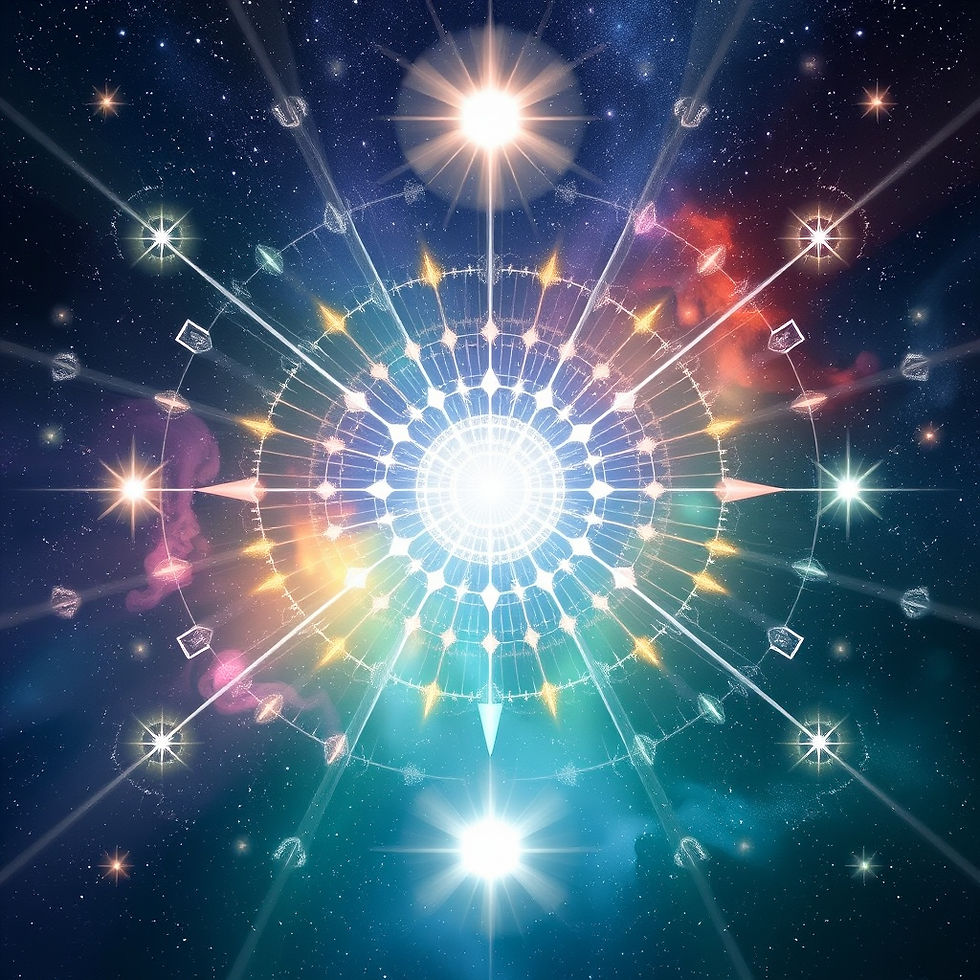The History of Essential Oils: A Timeless Tool for Natural Healing
- May 24
- 4 min read

Essential oils are more than just aromatic plant extracts—they are part of a legacy that spans cultures, continents, and centuries. Used for healing, ritual, beauty, and spiritual practice, essential oils have withstood the test of time as powerful tools for natural wellness.
In today’s world of modern health solutions, the return to plant-based practices is no coincidence. As interest in natural remedies grows, it’s worth exploring the deep historical roots of essential oils and why they remain so valuable today.
A 5,000-Year History of Wellness

The use of aromatic plants and oils dates back to ancient civilizations. In Egypt, essential oils played an integral role in everything from religious rituals to the embalming process. Frankincense and myrrh—often referenced in ancient texts—were prized for both their physical and spiritual properties.
In India, essential oils were used in Ayurvedic medicine to balance the body’s natural systems. Meanwhile, Chinese herbalists utilized aromatic plants in energy-based healing practices and early forms of acupuncture.
The Greeks and Romans adopted and expanded on these traditions, incorporating essential oils into medicine, massage, and personal care. Hippocrates, the "father of medicine," reportedly used over 300 plant-based remedies in his practices, many of which were aromatic oils.
Biblical scriptures also reference oils like spikenard, hyssop, and cedarwood—not just for ritual anointing, but for purification and healing purposes. These oils served both symbolic and practical roles, further illustrating their lasting significance.
Throughout the ages, essential oils have played a vital role in rituals, medicine, and daily life across many cultures. Here’s a brief look at how these powerful plant extracts have evolved across civilizations:
Mesopotamia (3500 BC): The earliest distillation apparatus was developed in Tepe Gawra (modern-day Iraq), laying the groundwork for oil extraction.
China (3000 BC): Emperor Shen Nung compiled a botanical reference with over 300 plants—many of which are still used in essential oil form today.
Egypt (1470–1330 BC): Queen Hatshepsut led an expedition to Punt, bringing back vast supplies of myrrh trees. Later, King Tutankhamun was buried with alabaster jars of precious oils, prepared for his journey into the afterlife.
Macedonia (345 BC): Alexander the Great was known for his lavish use of incense, particularly frankincense, both in battle and in ceremony.
Israel (0 AD): Biblical accounts tell of wise men bringing frankincense and myrrh to the newborn Christ—gifts of both spiritual and physical significance.
Italy (100 AD): Pliny the Elder, a Roman historian, detailed the use of herbs and essential oils in Natural History, influencing Western botanical medicine.
Persia (1000 AD): Physician Avicenna refined steam distillation techniques to extract floral oils, a breakthrough that advanced aromatherapy.
France (1930–1980 AD): René-Maurice Gattefossé and Dr. Jean-Claude Lapraz pioneered modern aromatherapy and clinical applications of essential oils.
USA (1985 AD): D. Gary Young began his research into essential oils, eventually founding Young Living and reigniting global interest in therapeutic oils.
These milestones remind us that essential oils have always been part of a deeper story—one that connects health, tradition, and the enduring wisdom of nature.
Rediscovery and Modern Relevance

Though the use of essential oils waned in the Middle Ages, interest surged again in the early 20th century, thanks to scientific pioneers such as René-Maurice Gattefossé. After accidentally discovering the healing properties of lavender oil on a burn, Gattefossé began studying the therapeutic potential of essential oils—coining the term aromatherapy in the process.
Later, D. Gary Young would bring essential oils into mainstream wellness conversations in North America. Through decades of research and advocacy, he helped introduce a new generation to the applications, chemistry, and spiritual potential of essential oils—much of which is preserved in the Essential Oil Reference Guide (Legacy Edition).
Why History Still Matters

The traditions of the past provide not only context but also confidence. Essential oils have been trusted by healers, physicians, and spiritual leaders for millennia—not because of fleeting trends, but because of their measurable impact on the human body and mind.
Today, oils like lavender, peppermint, eucalyptus, and frankincense continue to serve in supporting sleep, relieving tension, enhancing focus, and supporting immune health. Modern users now combine ancient techniques with scientific understanding for powerful, personalized wellness routines.
Honoring the Past, Empowering the Present

The long and storied history of essential oils reveals something profound: across time and culture, people have turned to plants for healing, connection, and balance. These oils are more than fleeting wellness trends—they are timeless tools that have earned their place in our homes and practices.
By learning from ancient traditions, we gain insight into how natural remedies can still serve us today. Whether you’re just beginning your journey with essential oils or deepening an existing practice, this knowledge reminds us that wellness is a path that connects generations.
At Seeds of Thyme, we invite you to explore, question, and rediscover. Let this be an invitation—not just to use essential oils, but to engage more thoughtfully with nature, tradition, and your own health.
Explore the Essential Oil Reference Guide and bring timeless wellness into your daily life.
References
Lawless, Julia. The Encyclopedia of Essential Oils. HarperThorsons, 1992.
Worwood, Valerie Ann. The Complete Book of Essential Oils and Aromatherapy. New World Library, 2016.
Ezzat, S. M., et al. “Historical Uses of Essential Oils and Modern Applications.” Frontiers in Pharmacology, vol. 10, 2019, https://doi.org/10.3389/fphar.2019.00865.
Nunn, John F. Ancient Egyptian Medicine. University of Oklahoma Press, 1996.
Gattefossé, René-Maurice. Gattefossé’s Aromatherapy. Translated by C.W. Betts, C.W. Daniel Co., 1993. (Original work published 1937)
The Holy Bible. Selected passages: Exodus 30, Matthew 2:11, Song of Solomon 1:12.
Young, D. Gary. Essential Oil Reference Guide (Legacy Edition). Seeds of Thyme, 2024.





Comments